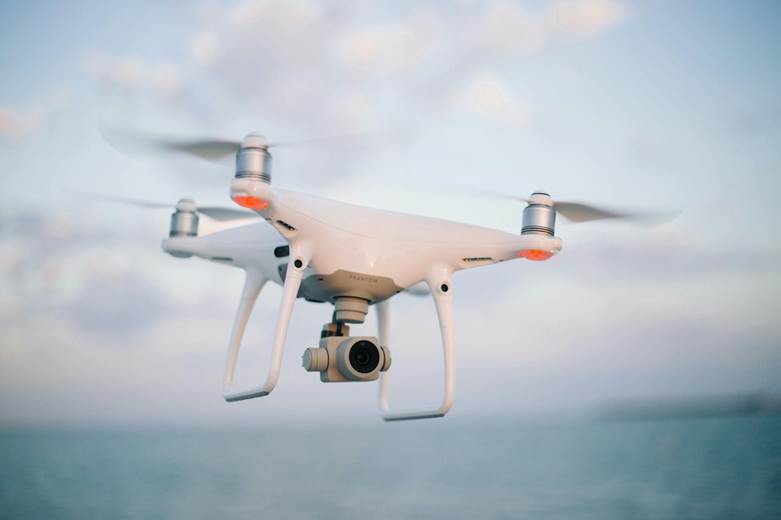Technology has transformed law enforcement, making it a crucial part of modern policing strategies. Agencies use digital tools to enhance crime prevention, investigations, and surveillance. AI-driven analytics, advanced forensic techniques, and data-driven policing have changed officers’ operations, allowing faster responses and improved decision-making.
- The Rise of AI and Surveillance Systems in Law Enforcement
- Predictive Policing and Data-Driven Crime Prevention
- Technology in Investigations: Digital Forensics and Cybersecurity
- Balancing Technology With Privacy and Civil Liberties
- The Future of Law Enforcement Technology
- Conclusion: Moving Toward a Tech-Savvy Future in Law Enforcement
In this post, we will explore the role of technology in law enforcement, examining how advancements in AI, data analytics, and digital forensics are transforming policing strategies and shaping the future of public safety.
The Rise of AI and Surveillance Systems in Law Enforcement
Artificial intelligence has presented a new era in surveillance. Law enforcement agencies rely on AI-driven analytics to process vast data, helping them detect patterns and predict criminal activity. Traditional surveillance methods, such as CCTV monitoring, have evolved into smart systems that can recognize faces, track movements, and even analyze behavior to flag suspicious activity.
These advancements have improved efficiency, allowing officers to focus on high-priority tasks rather than manually monitoring footage. AI analytics also assist in real-time crime prevention by identifying potential threats and alerting authorities before incidents escalate. Furthermore, surveillance systems integrated with AI can recognize and identify people and objects, giving law enforcement insights into public safety. Automation and predictive analytics are just a few ways AI and analytics revolutionize law enforcement.
Despite the benefits, these systems raise concerns about privacy, accuracy, and potential misuse. The challenge for law enforcement agencies is ensuring that AI-driven surveillance is implemented with proper oversight and ethical considerations.
Predictive Policing and Data-Driven Crime Prevention
Predictive policing uses algorithms and data analysis to forecast crime patterns and allocate resources more efficiently. Law enforcement agencies analyze crime statistics, historical data, and social trends to predict where crimes are likely to occur. This approach enables proactive policing, which can reduce crime rates by deploying officers to high-risk areas before incidents happen.
Software platforms aggregate various data points, including past crime reports, socio-economic conditions, and geographic trends. Agencies use this information to determine patrol routes and intervention strategies. While predictive policing enhances efficiency, concerns remain about potential biases in the algorithms. Data-driven methods must be carefully designed to ensure fair and unbiased policing.
Additionally, integrating machine learning into predictive policing allows law enforcement agencies to refine crime trend analysis continuously. Predictive models improve as AI systems process more data over time, making forecasting crime hotspots increasingly precise. This technological advancement not only aids in crime prevention but also helps optimize resource distribution, ensuring personnel and equipment are allocated where needed most.
Technology in Investigations: Digital Forensics and Cybersecurity
Digital forensics plays a necessary role in modern investigations. With the widespread use of smartphones, social media, and encrypted messaging platforms, law enforcement relies on digital tools to uncover evidence. Investigators extract data from mobile devices, analyze online activity, and decrypt protected files to track criminal behavior.
Cybersecurity measures have also become essential for protecting evidence and securing sensitive data. Law enforcement agencies work alongside cybersecurity experts to prevent cybercrimes, investigate digital fraud, and track illicit activities on the dark web. As criminals become more technologically advanced, law enforcement must continuously adapt to counter new threats.
Balancing Technology With Privacy and Civil Liberties
Integrating technology in law enforcement brings ethical concerns regarding privacy and civil liberties. Surveillance tools and data collection methods have sparked debates about how much access law enforcement should have to personal information. Privacy advocates warn that unchecked surveillance can lead to overreach and misuse.
Legal frameworks must adapt to address these concerns, guaranteeing that law enforcement agencies use technology responsibly. Transparency, accountability, and community engagement are crucial to maintaining public trust. Agencies must balance leveraging technology for public safety and upholding individuals’ rights.
The Future of Law Enforcement Technology
As technology continues to evolve, law enforcement will likely see even greater reliance on cutting-edge innovations in the future. Robotics, further advancements in facial recognition, and AI-driven crime analysis are expected to shape policing strategies. Automated drones equipped with surveillance capabilities could provide real-time intelligence during high-risk operations, while AI-powered crime prediction models may become more refined in forecasting criminal activity.
However, the increased use of technology raises questions about how these tools will be regulated and whether they will be deployed ethically. The challenge lies in developing policies that maximize public safety while ensuring transparency and accountability. Law enforcement agencies must continue engaging with technology experts, policymakers, and the public to establish responsible guidelines for using emerging tools.
Conclusion: Moving Toward a Tech-Savvy Future in Law Enforcement
Technology is shaping the future of law enforcement, providing powerful tools for crime prevention, investigations, and surveillance. AI-driven analytics, predictive policing, and digital forensics have improved efficiency and effectiveness in policing. However, ethical and privacy considerations must be addressed to ensure these advancements benefit society.
Law enforcement agencies must implement technology with caution, maintaining oversight and accountability. As innovations continue to emerge, the key to responsible policing lies in finding a balance between technological progress and the protection of civil liberties.















